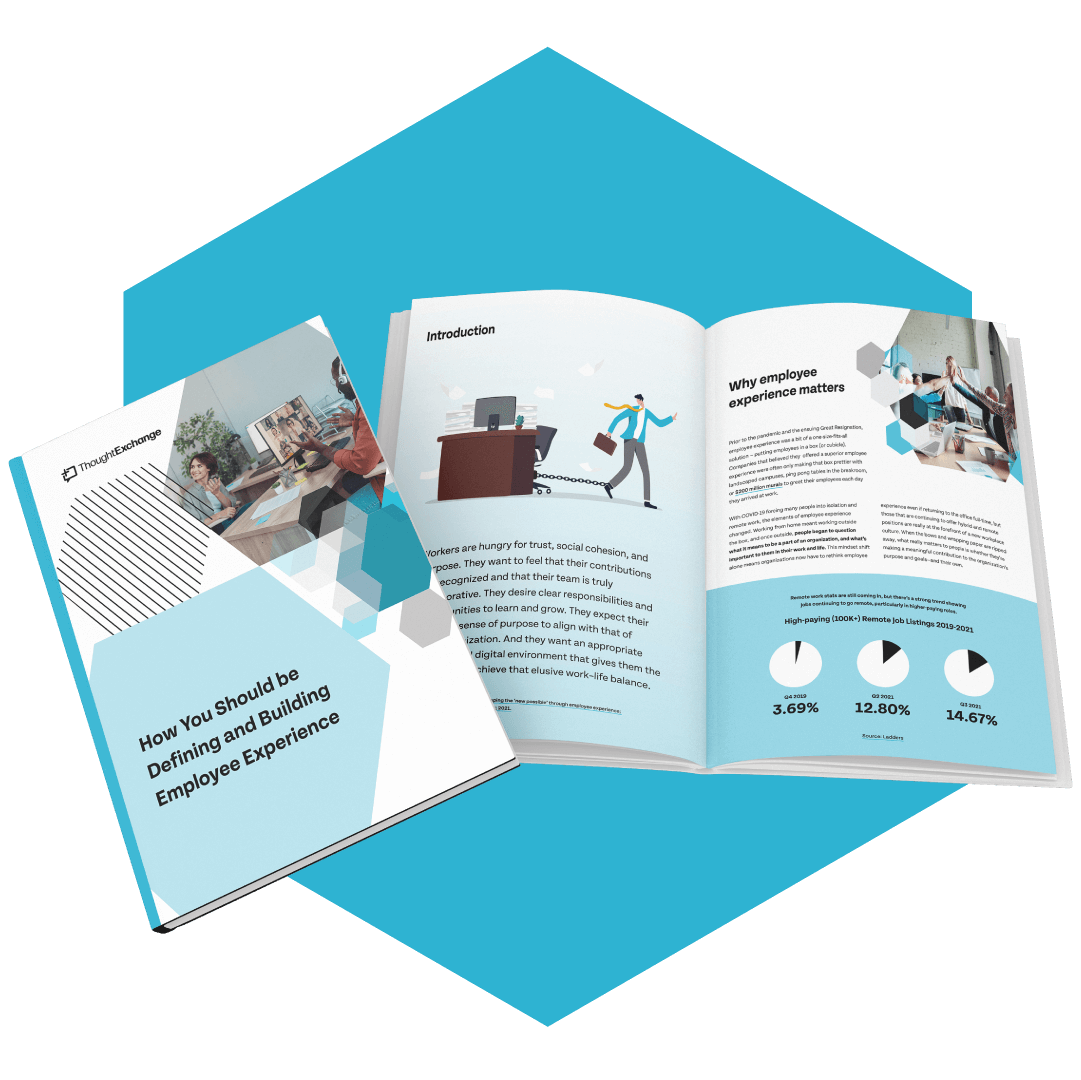June 15, 2022
Meghan MacRae
What’s Changed with EX Language
14 minutes
A pandemic that forced most businesses to reimagine how their employees can work safely. Social justice movements that exposed the deeply entrenched systemic inequities existing both inside and outside of the workplace. A workforce that began to understand their jobs as more than just a means of survival—rather, as a life experience that needs to bring fulfillment and personal development.
It’s easy to look at the past couple of years as disruptive, and to yearn for everything to go back to the way it was. But it’s not going to. And it shouldn’t.
Leaders and employees everywhere have opened their eyes to the exclusionary behaviors and practices that were holding us back. Top-down decision-making, cascading strategy, a hierarchy of listening, and inflexible workplace conditions—just to name a few.
Employees are demanding transformation in their experience at work, and the organizations that are resisting change are seeing their people vote with their feet. In order to keep the employee experience excellent and ensure a high-performance organization in this new work world, leaders need to welcome change and lean into learning from their employees.
If you’re someone who leads in this area, you’ll be used to language like “culture,” “employee engagement,” and “feedback.” However, there are new and innovative ways to approach employee experience that require leaders to recognize how each of these things has changed, and how to build a better version that meets employees where they’re at today.
The employee experience landscape isn’t what it used to be, so in the chart below, we’ll outline some emerging terminologies, and expand on more traditional terminologies.
CULTURE
Definition
What's the same
What's changed
What you need to build
EMPLOYEE ENGAGEMENT
Definition
What's the same
What's changed
What you need to build
EMPLOYEE ONBOARDING
Definition
What's the same
What's changed
What you need to build
EMPLOYEE LISTENING
Definition
What's the same
What's changed
What you need to build
FEEDBACK
Definition
What's the same
What's changed
What you need to build
FUTURE OF WORK
Definition
What's the same
What's changed
What you need to build
EMPLOYEE VOICE
Definition
What's the same
What's changed
What you need to build
Evolving employee experience
As the workplace changes in step with our social practices and expectations, so should the ideas we associate with employee experience. By expanding these common terms, we embrace the inevitable changes and make way for an employee experience that welcomes, includes, and celebrates every employee, and recognizes their involvement in creating company culture.
Innovative leaders everywhere are embracing this evolution and seeing better business outcomes for it.
Interested in diving deeper into how to define and build employee experience as we progress into the future of work—and the remote and hybrid workplace? Download our free Employee Experience guide for a wealth of advice and tools you can start implementing at your organization today.


Meghan MacRae
Meghan was raised by an English teacher, thus she found a way to incorporate her instinct for grammar and spelling into her career. She honed her corporate writing skills in clothing companies and the music industry, and brings a passion for creativity and playful wordsmithing to her work at ThoughtExchange. When she’s not crafting language that brings people together, she’s reading a thesaurus, playing Uno with her kids, cooking and singing and dancing, and collecting vinyl and art.More from the Archives
Unlocking Attendance: Proven Strategies to Combat Student Absenteeism and Restore Funding

The Attendance Crisis in US Schools: What’s Behind Student Absenteeism and How to Solve It

The Leader’s Guide to Conversational Surveys: Boosting Response and Gaining Deeper Insight


